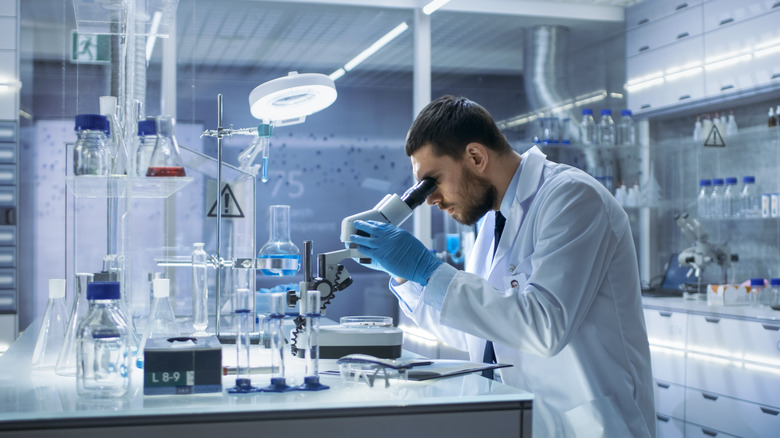The Role Of GTE In DNA Extraction
In molecular biology, good buffer choice and preparation for different DNA isolation steps can be the difference between moving on to protein expression or opening up another maxi-prep kit to start over. In spite of their crucial importance, buffer recipes are often just that–recipes written without explanation or rationale for the different components. One such buffer is glucose-tris-EDTA or GTE buffer.
What is GTE Used For?
What is GTE Used For?
GTE is used to resuspend bacterial cell pellets prior to lysing (breaking open) the cells and harvesting the plasmid DNA inside. Lysozyme, which softens the cell membranes, is often added along with the GTE buffer. Achieving a homogenous suspension of whole cells during this step so that the subsequently added lysis solution can get to all of the cells is key to getting good DNA yields. GTE is designed to do this while also providing a stable environment for the DNA.
Glucose for Osmolarity
Glucose for Osmolarity
50mM (millimolar) glucose sugar is added to GTE buffer to maintain osmolarity where the solute concentration outside the cells is close to that inside the cells. This prevents premature cell lysis, which can cause lower DNA yields to due to aggregation and degradation. The other components of the buffer also contribute to the osmolarity of the solution, but glucose, being a non-electrolyte, is a good choice because it does not interfere with the solution's buffer properties.
Tris for pH Stability
Tris for pH Stability
Tris is the short name for tris(hydroxymethyl)aminomethane, which is a very common pH buffer. In the case of GTE buffer, the acid salt (Tris-HCl) is added to the buffer at a concentration of 25mM. This maintains the pH of the solution at a near-physiological 8.0, an ideal pH for preventing acid hydrolysis (degradation) of the plasmid DNA and unwanted side reactions of the other cell components.
EDTA Prevents DNA Degradation
EDTA Prevents DNA Degradation
EDTA, or ethylenediaminetetraacetic acid, captures or "chelates" metal ions out of solution, preventing them from participating in unwanted side reactions. In GTE buffer, EDTA is added at 10mM. Its primary purpose is in the buffer to round up free zinc, magnesium, and calcium, thereby preventing DNA degradation by certain pathways that require those metals.
Some Important Tips
Some Important Tips
Keep your GTE buffer cold and make it in small quantities to prevent the growth of unintended bacteria in it. Sugar and the controlled pH make for a great growth medium. Always use purified water. Tap water can have an excess of metal ions from the pipes, which can overwhelm the ability of the EDTA to capture. If you suspect the presence of interfering RNA in your sample, add RNase A at 100 micrograms per milliliter to your GTE buffer to eliminate the problem.
References
- "Essential Molecular Biology: A Practical Approach." Terence A. Brown; 2000.
- "Sample preparation techniques in analytical chemistry, Volume 162." Somenath Mitra; 2003.
- "Lehninger principles." Albert L. Lehninger, David Lee Nelson, Michael M. Cox; 2005.
- "E. coli plasmid vectors: methods and applications." Nicola Casali, Andrew Preston; 2003.
Cite This Article
MLA
Niece, Krista. "The Role Of GTE In DNA Extraction" sciencing.com, https://www.sciencing.com/the-role-of-gte-in-dna-extraction-13365693/. 31 December 2018.
APA
Niece, Krista. (2018, December 31). The Role Of GTE In DNA Extraction. sciencing.com. Retrieved from https://www.sciencing.com/the-role-of-gte-in-dna-extraction-13365693/
Chicago
Niece, Krista. The Role Of GTE In DNA Extraction last modified August 30, 2022. https://www.sciencing.com/the-role-of-gte-in-dna-extraction-13365693/
